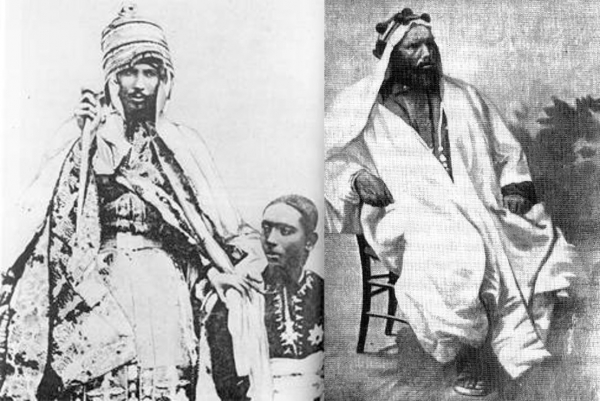Click here for the audio.
Transcript
Rutha Bahlibi: [00:00:00] Thanks for tuning in to the Harambee Today podcast. This is episode eight of our series exploring the roots of ethnic conflict in Ethiopia. This will be a short episode focusing on the history of Tigrayans.
Rutha Bahlibi: [00:00:12] Here's linguist Dr. Weldu Weldeyesus.
Dr. Weldu Weldeyesus: [00:00:13] The Tigrayan people as a people occupied a very vast area. For example, if you take the present-day Eritrea, especially the highlands--the highlanders of Eritrea and the highlanders of Ethiopia--they speak the same language. They have the same culture, literally they are the same. It is only historical accidents that ended up dividing these people, so Tigrinya-speaking people in Ethiopia, Tigrinya-speaking people in Eritrea, and in Ethiopia Tigrinya-speaking people in some parts of Tigray and in some parts of Amhara, they are Tigrayans.
Dr. Weldu Weldeyesus: [00:01:03] Presently I know that in Eritrea they are called Tigrinya, but Tigrinya is a name of the language. So, Tigrinya speakers are Tigrayans as Amharic speakers are Amharas, Oromo speakers are Oromos, the Tigrinya speakers are Tigrayans. But for political and historical reasons, we've been separated and the Tigrinya-speaking people in Eritrea are being referred to as Tigrinya. The Tigrinya people.
Dr. Weldu Weldeyesus: [00:01:34] So, they were at the center of the Axumite Empire in Axum, not just only Axum but the present-day Tigray going to present-day Christian Highlanders in Eritrea and then Tigrinya-speaking people in Gonder of the Amhara regional state. All of these are under Tigray. During Emperor Menelik some huge parts of Tigray were put under Gonder. The Southern part, places like present day Alamata, present day Kobo, they were put under Amhara.
Dr. Weldu Weldeyesus: [00:02:18] So when the EPRDF (Ethiopian People's Revolutionary Democratic Front) took control, when they started creating the states, all Tigrinya-speaking people--not only in Tigray during the era of emperors but also other parts which are Tigrinya-speaking people--were (put) under the present-day Tigray national regional state. The primary criterion is the language they speak. And culturally they are the same, and predominantly they are Christians. So you can see that culturally, linguistically, and religious wise, you can see that they are very similar. So, these are the people who are referred to as Tigrayans. And originally the center of Tigrayans was the Axumite Empire.
Dr. Weldu Weldeyesus: [00:03:22] Beyond the Tigrinya-speaking people, you would definitely see the Amharic-speaking people, the Oromo-speaking people, the Afar-speaking people and many other Ethiopian nationalities in Ethiopia. Because the Axumite Empire was said to be huge. Some historians say that they even managed to defeat other leaders of other areas including the present-day Yemen, present-day Sudan. It was one of the most powerful empires of that time.
BLOG COMMENTS POWERED BY DISQUS

